The Xiaomi Mi 12 is out, and what’s surprising, Xiaomi benchmarks Apple! The vanilla version will directly compete with the iPhone 13, while the Xiaomi Mi 12 Pro will take on the iPhone 13 Pro Max.
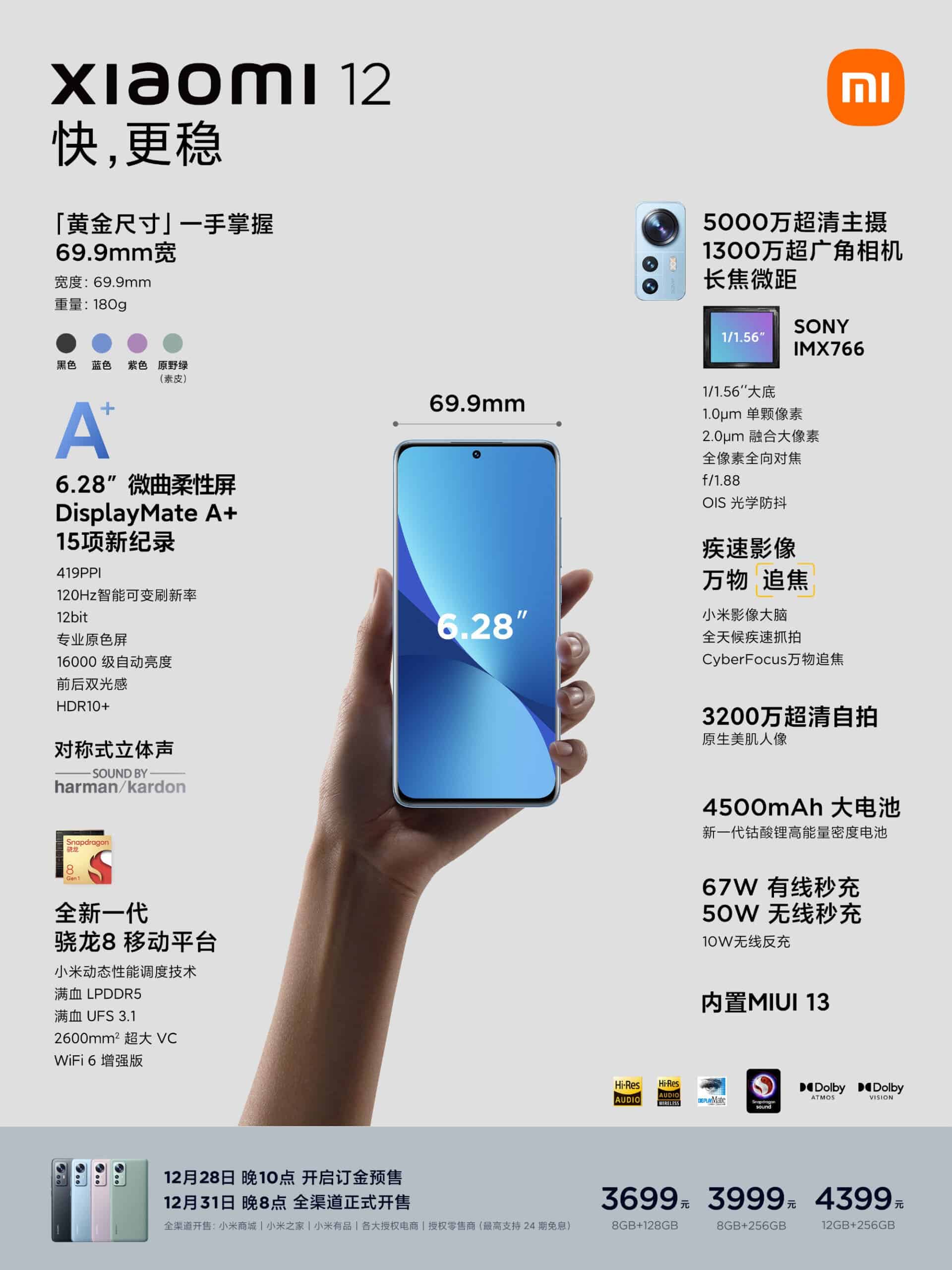
The Xiaomi Mi 12 8GB+128GB version costs 3699 yuan ($581), the 8GB+256GB model comes at 3999 yuan ($628), and the 12GB+256GB version is 4399 yuan ($691).
Xiaomi Mi 12 Design And Screen
The phone is available in four color options of black, blue, purple, and the “wild green” version with high-quality environmentally friendly plain leather. This phone is considered to be a small-sized premium smartphone. That’s why it has a 69.9mm golden grip and weighs 180g.
On the front, our protagonist carries a 6.28-inch AMOLED curved screen with a resolution of 2400*1080. Also, it supports a 120Hz refresh rate, 12bit color depth, 16000 automatic brightness, 419 PPI pixel density, and Corning Victus protective glass.
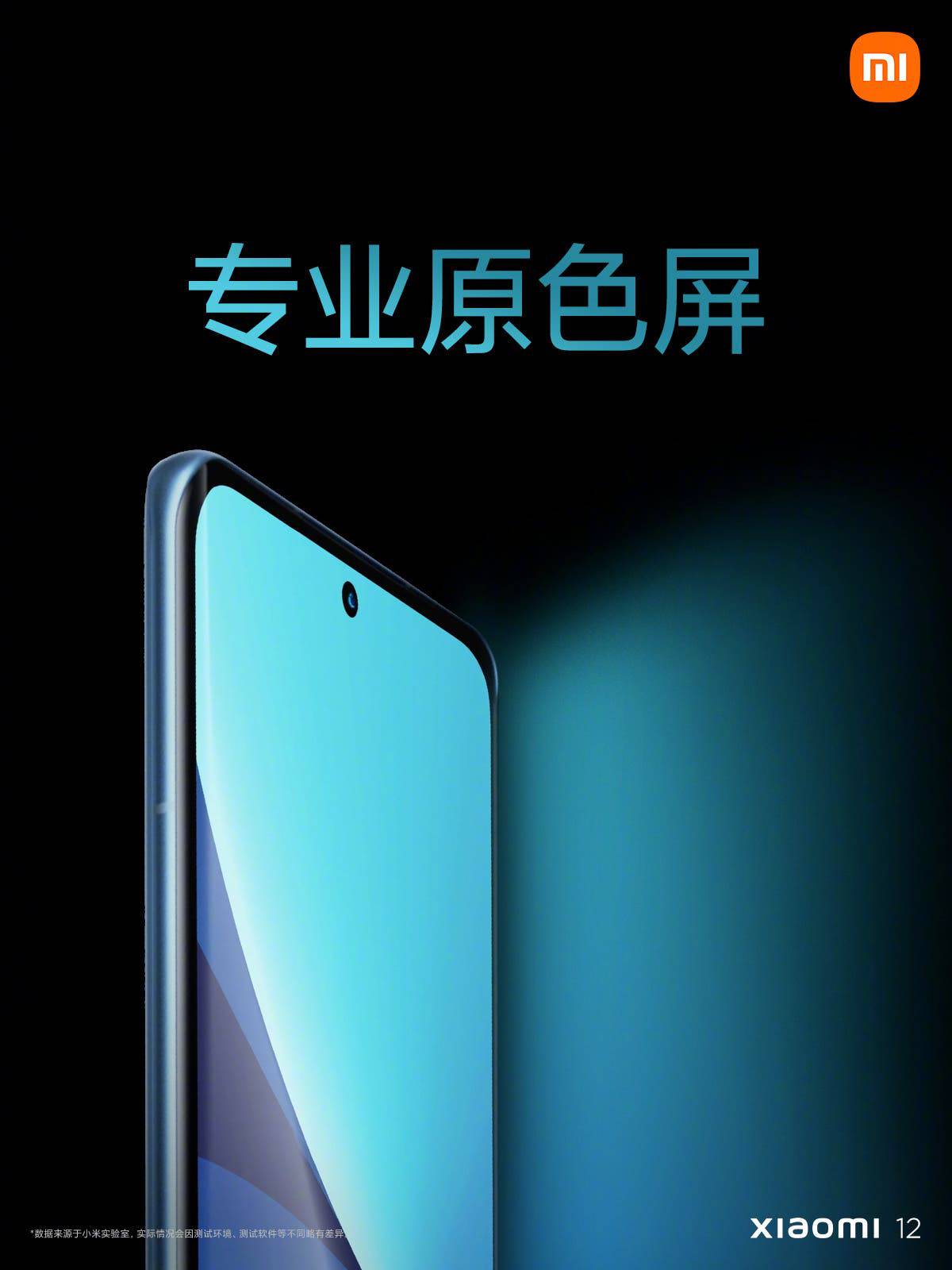
At the same time, this screen of Xiaomi Mi 12 has passed the International Evaluation Agency DisplayMateA+ certification and broke 15 new screen records.
They include:
- Highest brightness OLED full-screen smartphone
- Highest peak brightness display
- Largest screen native color gamut
- Highest contrast
- Lowest screen reflectivity
- Contrast level under the highest ambient light illumination
- Minimal viewing angle brightness change
- Smallest viewing angle white color cast
- Optimal absolute color accuracy
- Smallest maximum color difference
- Minimal color accuracy drift caused by changes in the average picture brightness level
- The smallest maximum color shift caused by changes in the average picture brightness level
- Optimal image contrast accuracy and intensity level accuracy
- Minimal image contrast and intensity level drift with the average image brightness level
Hardware and Performance
Under the hood, the Xiaomi Mi 12 hosts the Snapdragon 8 Gen1 flagship chip. It is paired with an LPDDR 5 RAM and UFS 3.1 native storage. Thus, the phone comes with an iron triangle combination. As for the processor, it adopts 4nm process technology. Also, this SoC comes with an updated CPU architecture. The CPU performance is up to 20%. At the same time, the power consumption has been reduced by 30%. The GPU core area is 60% larger, the graphics rendering speed has been increased by 30%, and the energy efficiency ratio has also been increased by 25%.
In order to allow the Snapdragon 8 Gen 1 to play a more extreme performance, the Xiaomi Mi 12 uses a 2600mm² super large area VC heat sink to allow faster heat dissipation.
There is a built-in 4500mAh large battery, which supports 67W wired fast charging, 50W wireless fast charging, and 10W wireless reverse charging. According to the official introduction, the phone can get 100% power in 39 minutes (wired charging).
The phone also boasts the smallest and highest density 5G motherboard in the history of Xiaomi mobile phones. Now, it comes with 10% more components and a 17% smaller area. Moreover, it has the thinnest VC liquid cooling heat dissipation in the history of Xiaomi mobile phones. The internal capillary structure density of the liquid cooling is increased by 20%. And of course, it is the highest energy density fast charge battery in the history of Xiaomi mobile phones. The device uses a new generation of lithium cobalt oxide, the cost of which is 14% higher.
In other aspects, the Mi 12 has built-in Harman Kardon symmetrical dual speakers, and the MIUI 13 operating system is pre-installed at the factory.
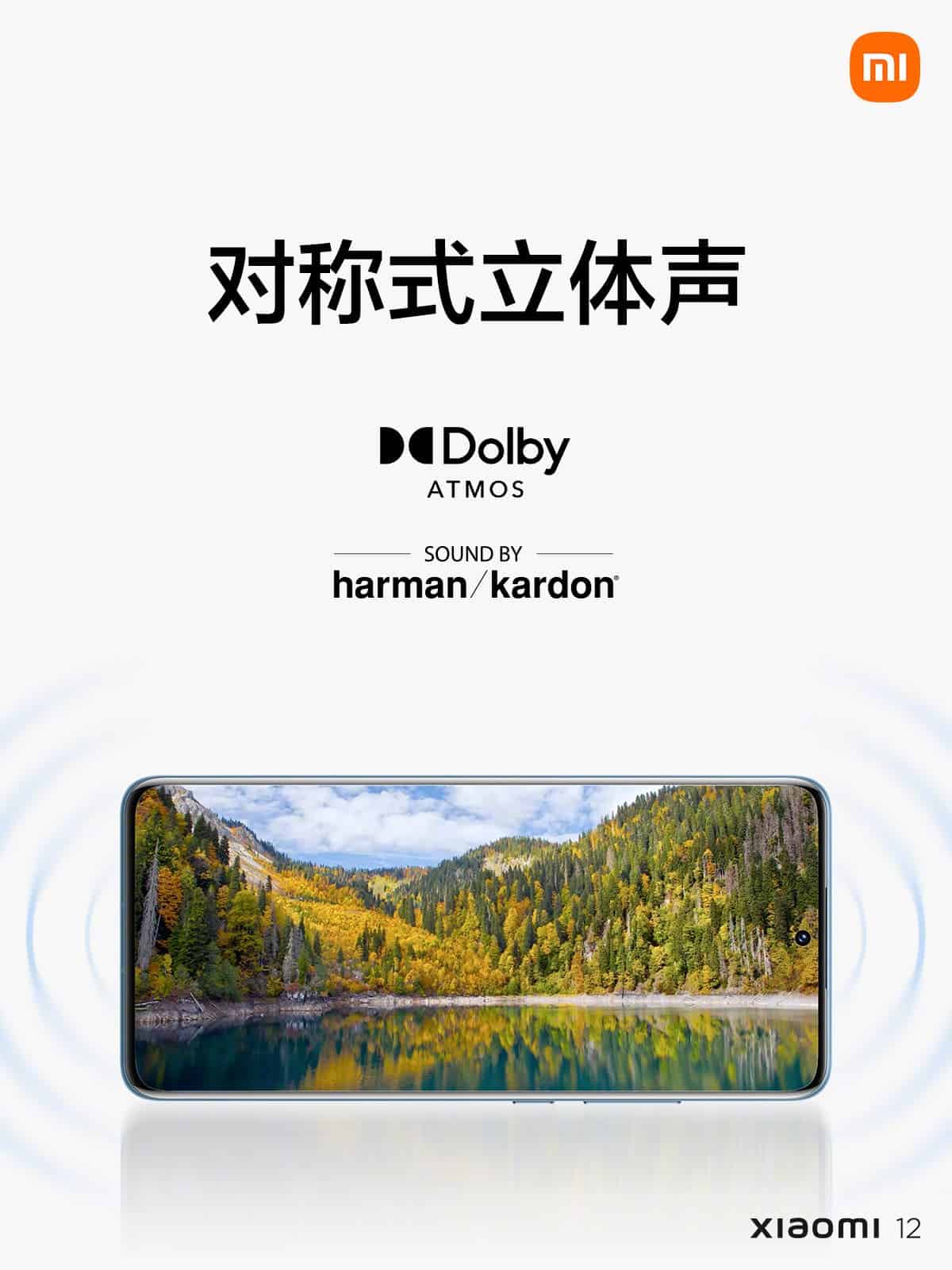
Xiaomi Mi 12 Camera
The Mi 12 features a 50-megapixel main camera. The Sony IMX766 sensor supports 4-axis optical image stabilization. There is also a 13-megapixel ultra-wide-angle lens as well as a telephoto/macro lens. On the opposite side, we can find a 32- megapixel front camera. This lens supports native beautifying portraits.
However, the biggest highlight in this department is the use of a brand-new imaging brain for the first time. It contains four functional modules: intent recognition unit, acceleration engine, computing unit, and ecological engine. Due to it, the continuous shooting interval is greatly shortened. Also, it improves the continuous shooting experience.
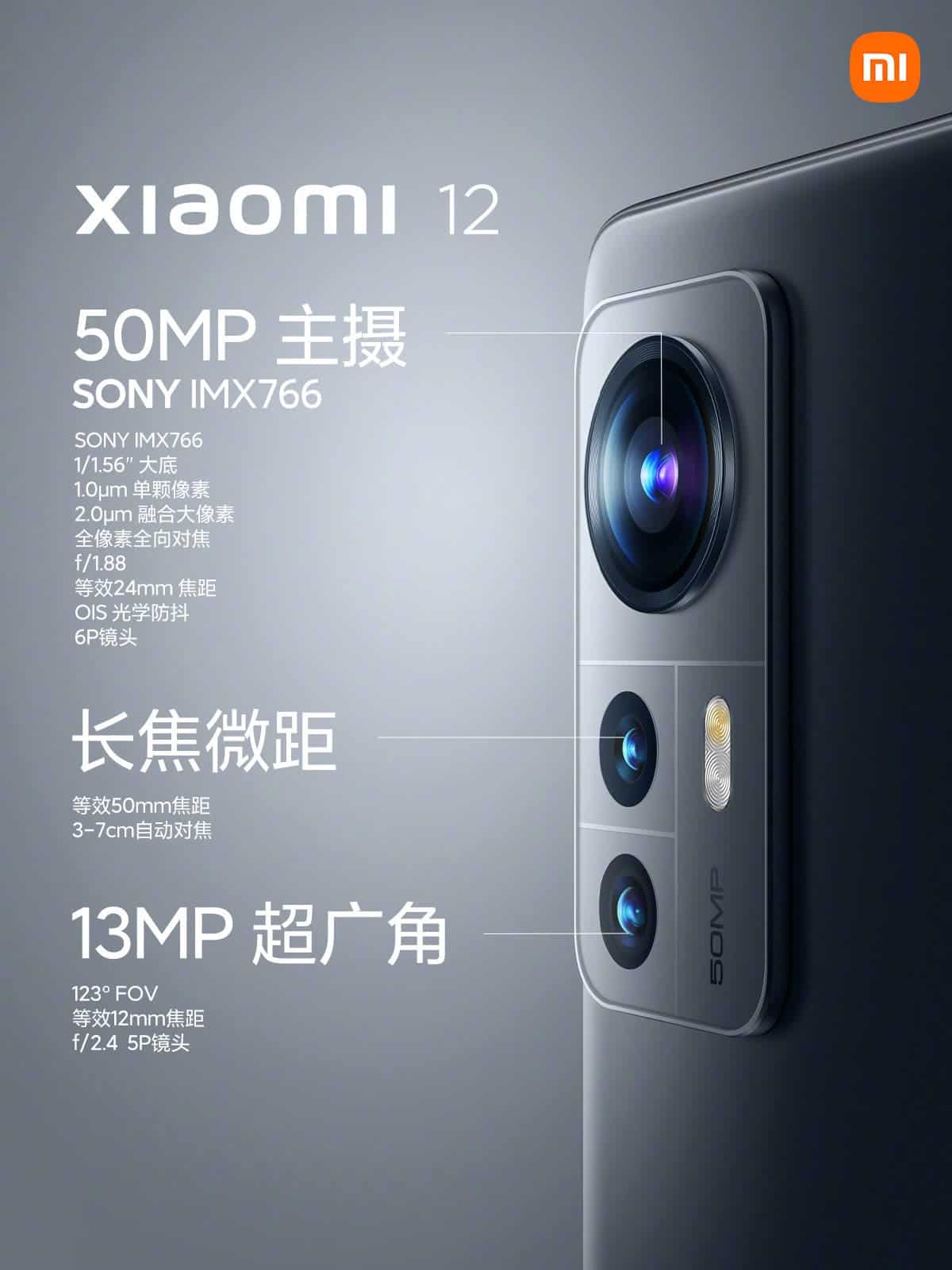
Thanks to the Xiaomi Image Brain, the startup speed is increased by 21.2%, the photographing speed is increased by 53.7%, the continuous photographing speed is increased by 209%, and the night shooting speed is increased by 39.9%. It took two years to come in with such a technology.
According to the data released by Xiaomi, in comparison with a lot of Android flagships, even if taking photos in low light conditions, it takes only 0.37 seconds for the Xiaomi Mi 12, and 0.45 seconds to 0.75 seconds for the average Android flagship.
Another interesting camera feature is the CyberiFocuis tracking system. It can automatically identify human bodies, faces, and even animals like cats and dogs. After double-clicking, you can lock any object at will to achieve tracking focus.
Connectivity
It is worth mentioning that Mi 12 is also the strongest Mi mobile phone. The network optimization of 8 scenarios solves three major pain points. They are intelligent scene judgment, fast return to the network, and antenna signal enhancement. The transmission power is increased by 5%.

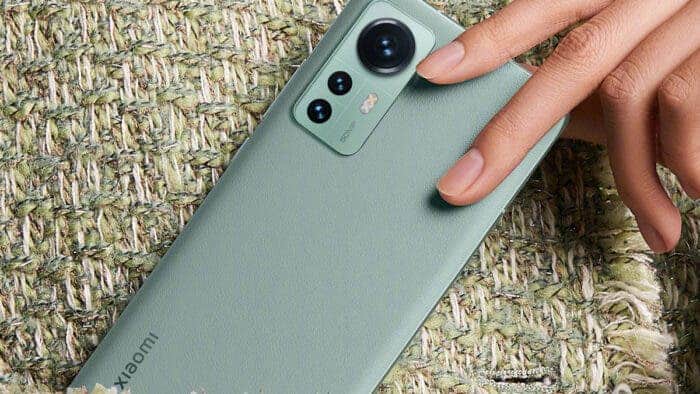



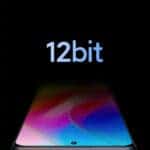



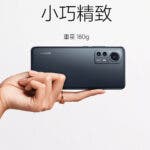



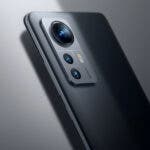
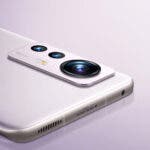
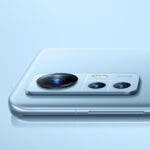




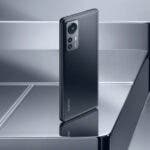

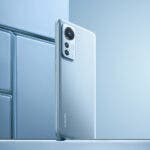
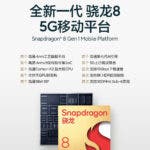
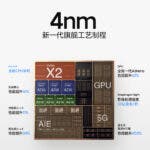
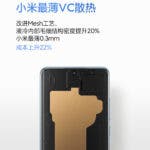
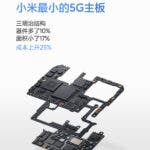

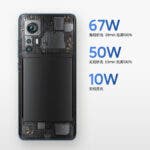
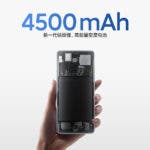





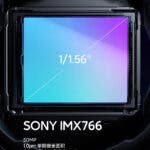










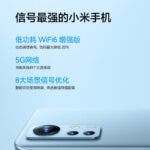

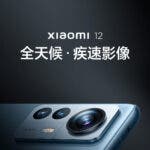





the price exploded… bye Xiaomi
What on earth is a "iron triangle combination"?